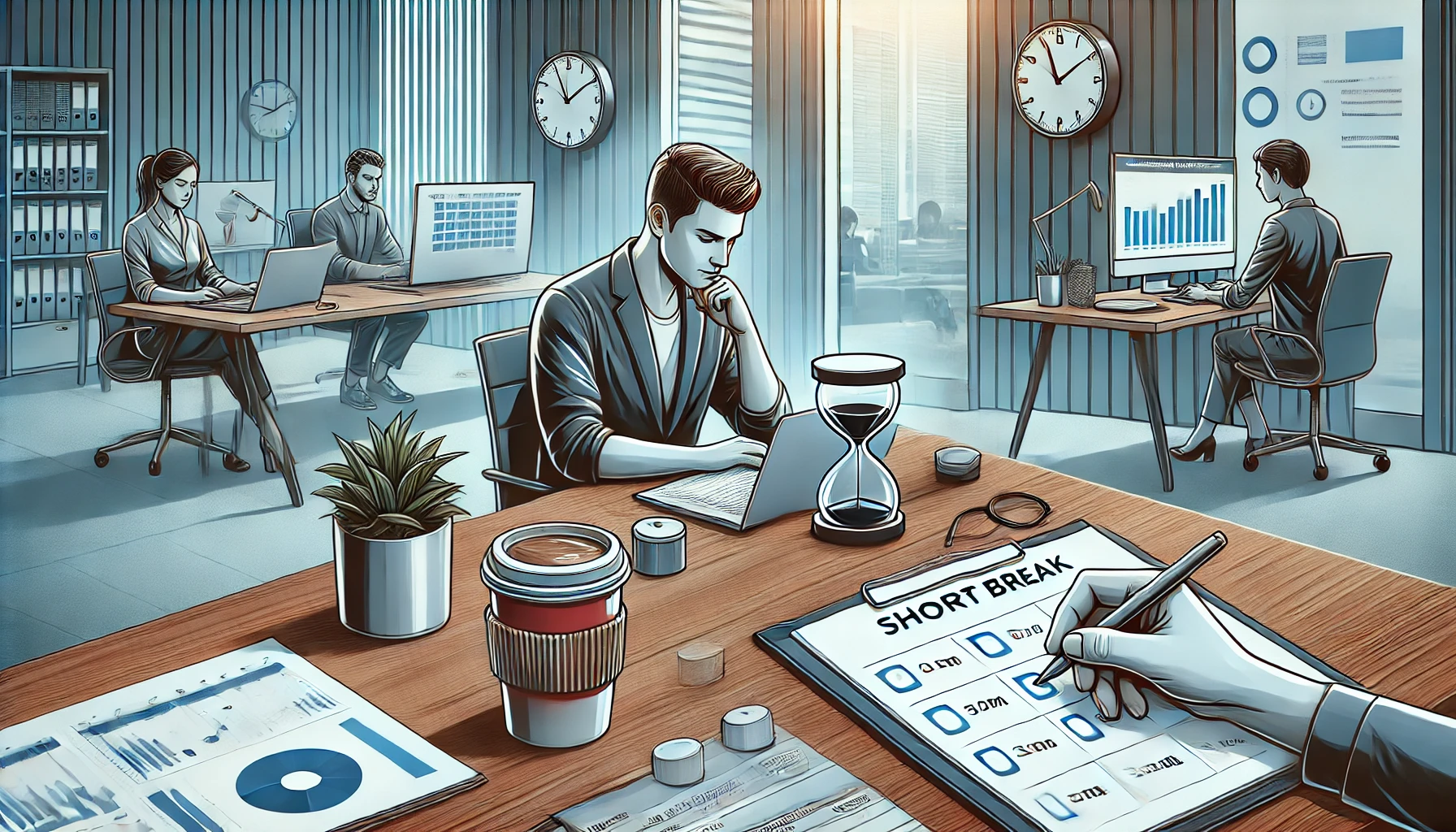In today’s fast-paced work environment, productivity is essential—but working harder doesn’t always mean working smarter. Many professionals push themselves too hard, leading to stress, exhaustion, and burnout.
Sustainable productivity is about achieving high performance while maintaining well-being. In this article, we’ll explore seven effective strategies to boost workplace productivity without sacrificing your health or happiness.
1. Prioritize Tasks Using the 80/20 Rule
Not all tasks contribute equally to success. The 80/20 Rule (Pareto Principle) states that 80% of results come from 20% of efforts.
How to apply the 80/20 rule:
✔ Identify high-impact tasks that produce the most value.
✔ Eliminate or delegate low-value, time-consuming tasks.
✔ Focus your energy on the most important priorities.
✔ Schedule demanding work during peak productivity hours.
💡 Example: Instead of replying to every email immediately, batch responses and focus on critical tasks first.
2. Use Time Management Techniques to Stay Efficient
Managing time wisely prevents overwhelm and improves productivity.
Effective time management techniques:
⏳ Pomodoro Technique – Work for 25 minutes, then take a 5-minute break.
📅 Time Blocking – Schedule specific time slots for tasks instead of multitasking.
📊 Eat the Frog – Tackle the hardest task first thing in the morning.
✅ Batch Processing – Group similar tasks together for efficiency.
💡 Tip: Productivity isn’t about doing more—it’s about doing what matters most efficiently.
3. Avoid Multitasking and Focus on Deep Work
Multitasking reduces concentration and increases errors. Instead, focus on one task at a time.
How to improve focus and deep work:
✔ Minimize distractions—turn off notifications and use “Do Not Disturb” mode.
✔ Allocate time for uninterrupted work sessions.
✔ Use noise-canceling headphones or background music to stay focused.
✔ Set boundaries—let colleagues know when you’re in deep focus mode.
💡 Example: Instead of constantly switching between tasks, dedicate a full hour to a single, important project.
4. Take Breaks to Recharge and Prevent Burnout
Skipping breaks lowers productivity and increases stress. Regular breaks improve focus, energy, and mental clarity.
Best practices for work breaks:
✔ Take a 5-10 minute break every hour to refresh your mind.
✔ Step outside for fresh air and movement.
✔ Use the 20-20-20 rule—every 20 minutes, look at something 20 feet away for 20 seconds.
✔ Stay hydrated—drink water regularly to maintain energy levels.
💡 Tip: Breaks aren’t a waste of time—they make your working hours more effective.
5. Learn to Say No and Set Boundaries
Overcommitting leads to burnout and decreased productivity. Being assertive about your limits protects your energy.
How to set healthy boundaries:
✔ Politely decline non-essential tasks that don’t align with your priorities.
✔ Communicate workload limits with managers and colleagues.
✔ Set realistic expectations for deadlines and deliverables.
✔ Avoid checking emails outside of working hours.
💡 Example: Instead of saying “I’ll try to squeeze it in,” say “I don’t have the capacity right now, but I can help next week.”
6. Optimize Your Work Environment for Maximum Efficiency
A cluttered or distracting workspace reduces focus and motivation. Optimizing your environment boosts efficiency and comfort.
How to improve your workspace:
✔ Keep your desk organized and clutter-free.
✔ Use ergonomic furniture to reduce physical strain.
✔ Adjust lighting and screen settings to reduce eye fatigue.
✔ Personalize your space with plants, artwork, or inspiring quotes.
💡 Tip: A clean and comfortable workspace enhances creativity and concentration.
7. Maintain Work-Life Balance to Sustain Productivity
Long hours don’t always mean higher productivity—in fact, they often lead to diminished returns.
Ways to maintain work-life balance:
✔ Set clear boundaries between work and personal life.
✔ Engage in hobbies and social activities outside of work.
✔ Get enough sleep to restore mental and physical energy.
✔ Practice mindfulness or meditation to manage stress.
💡 Tip: A well-rested mind is more creative, focused, and productive than an overworked one.
Final Thoughts
Sustainable productivity isn’t about working more—it’s about working smarter. By prioritizing tasks, using time management techniques, focusing deeply, taking breaks, setting boundaries, and maintaining balance, you can achieve high performance without burnout.
Start applying these strategies today and transform the way you work for long-term success! 🚀

